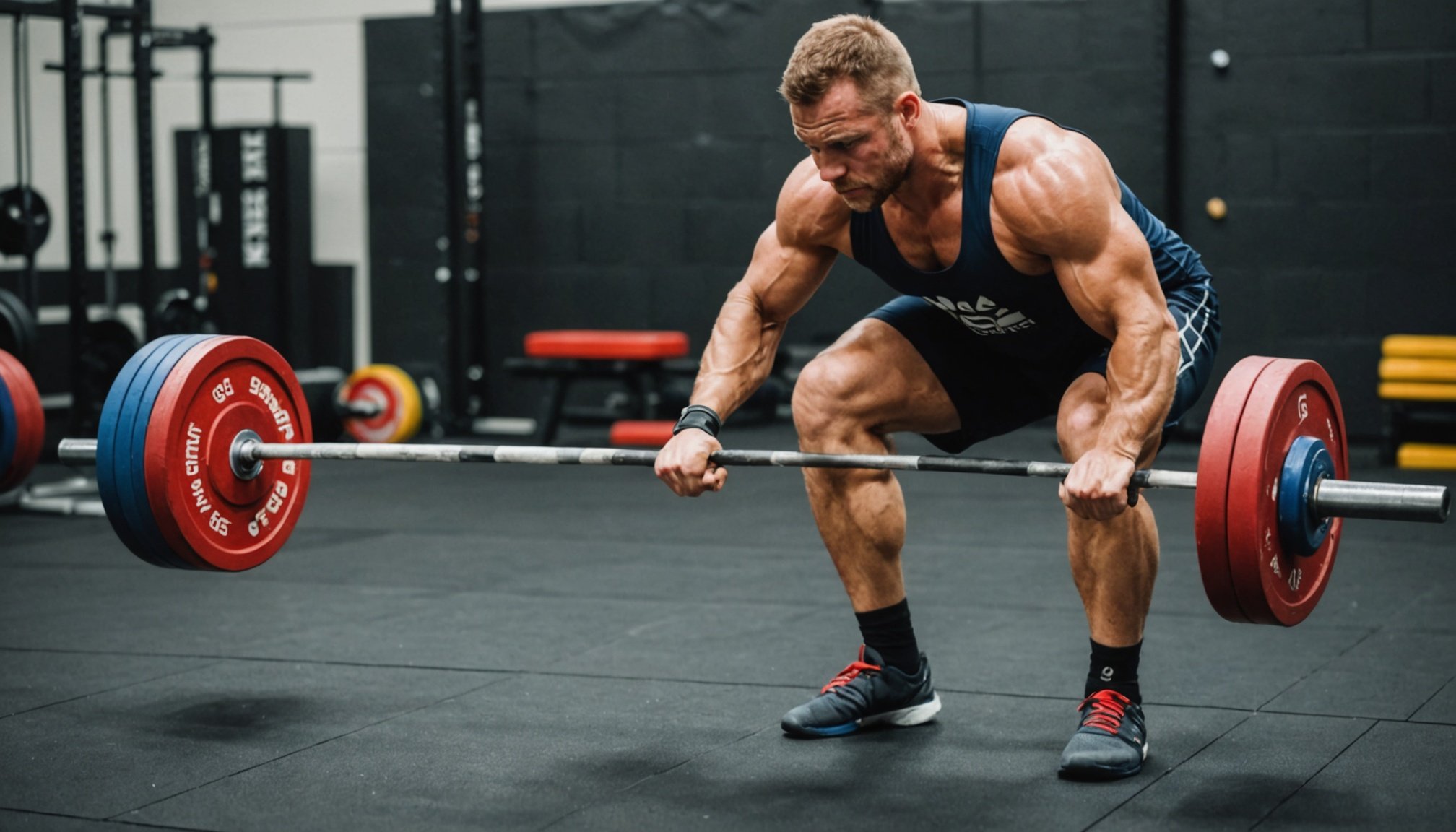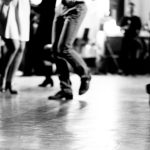Ankle injuries can derail a weightlifter's career. Customized proprioceptive workouts offer a transformative approach to preventing these setbacks. By enhancing balance and coordination, these tailored exercises equip competitive athletes with the tools needed to protect their ankles. This targeted training not only improves performance but also fosters longevity in the sport. Discover how investing in ankle safety through personalized workouts can lead to remarkable benefits, ensuring weightlifters remain strong and injury-free.
Understanding Proprioception in Weightlifting
Proprioception is a crucial component in sports, particularly in weightlifting. It refers to the body's ability to sense its position, movement, and equilibrium. This awareness is fundamental for athletes as it assists in executing precise movements and maintaining balance. Proprioception plays a significant role in ankle stability, which is essential during weightlifting exercises.
Also to discover : How Varying BPM in Music Influences Your Lifting Speed and Muscle Activation
When lifting weights, the ankles are under constant pressure and need to support the body's movements efficiently. Enhanced proprioceptive abilities allow for better control and alignment, reducing the risk of sprains or other injuries. For instance, when performing a squat, proprioception helps the lifter maintain proper form and balance, ensuring that the ankles remain stable throughout the movement.
Moreover, proprioceptive training is directly linked to injury prevention. By engaging in exercises that improve proprioception, athletes can enhance their body's natural ability to react to changes in movement and position. This leads to a lower likelihood of injuries, as the body can adjust more swiftly to unexpected shifts or imbalances. Incorporating proprioceptive exercises, such as balance drills or stability exercises, into a training routine can significantly bolster an athlete's performance and safety in weightlifting.
Have you seen this : Unlocking Peak Performance: The Role of Biofeedback in Elevating Muscle Coordination for Athletes
Customized Proprioceptive Workouts for Ankle Safety
Customized workouts are vital for enhancing ankle safety in weightlifting. These workouts focus on improving proprioceptive training, which is essential for maintaining balance and preventing injuries.
Key Components of Effective Proprioceptive Workouts
Effective proprioceptive workouts should incorporate exercises that challenge balance and coordination. Activities such as single-leg stands, balance board exercises, and agility drills are excellent for enhancing proprioceptive capabilities. These exercises stimulate the body's sensory receptors, improving awareness of joint position and movement.
Tailoring Workouts to Individual Athlete Needs
Every athlete is unique, and therefore, workouts should be tailored to individual needs. By assessing an athlete's current proprioceptive abilities and ankle stability, a customized plan can be developed. This plan should focus on strengthening weak areas and enhancing overall performance. For instance, athletes with previous ankle injuries may require more targeted exercises to rebuild stability.
Progression and Adaptation in Proprioceptive Training
Proprioceptive training should be progressive, gradually increasing in complexity and intensity. As athletes improve, workouts can be adapted to include more challenging exercises, ensuring continuous development. This progression helps in building resilience and further reducing the risk of injuries. Regularly updating and adapting the training regimen ensures that athletes remain engaged and motivated.
Research and Evidence Supporting Proprioceptive Training
Recent research studies have increasingly highlighted the benefits of proprioceptive training in enhancing athletic performance and preventing injuries. A multitude of studies have demonstrated that incorporating proprioceptive exercises into training regimens can significantly reduce the incidence of ankle injuries. This is particularly crucial for weightlifters, where ankle stability plays a vital role.
Analysis of Findings
In examining various studies, evidence-based practice emerges as a cornerstone in understanding the impact of proprioceptive training. Research consistently shows that athletes who engage in these exercises experience improved joint position awareness and balance. This heightened awareness is linked to a reduction in injury rates, particularly in the ankles, as athletes can better anticipate and respond to changes in movement.
Expert Opinions
Experts in the field of sports science advocate for the inclusion of proprioceptive workouts in athletic training. They argue that these exercises not only enhance performance but also build resilience against injuries. By focusing on evidence-based practice, trainers can tailor programs that address specific needs and weaknesses, ensuring athletes achieve optimal results. The consensus among professionals underscores the efficacy of proprioceptive training in fostering safer and more effective athletic performance.
Practical Examples of Proprioceptive Workouts
Understanding how to integrate proprioceptive workouts into your routine can greatly enhance ankle stability and prevent injuries. Let's explore some practical examples and strategies.
Specific Exercises for Enhancing Ankle Proprioception
To boost ankle proprioception, incorporate exercises like single-leg balance drills, where standing on one leg challenges your balance. Adding a balance board can increase difficulty, engaging more muscles and improving coordination. Agility drills, such as ladder exercises, also enhance proprioceptive abilities by requiring quick foot movements and precise control.
Integrating Proprioceptive Workouts into Existing Training
Incorporating these workouts into your existing training regimens is straightforward. Start with a warm-up that includes proprioceptive exercises to prepare your body for more intense activities. Gradually integrate these exercises into your routine, ensuring they complement your primary workouts. This integration not only improves balance but also fortifies your body against potential injuries.
Monitoring Progress and Adjusting Routines
Regularly monitoring your progress is crucial for effective proprioceptive training. Keep track of improvements in balance and coordination to assess the efficacy of your workouts. Adjust routines by increasing the complexity of exercises as your proprioceptive skills improve. This ensures continuous development and maximizes the benefits of your training regimens.
Strategies for Injury Prevention in Competitive Weightlifting
In competitive weightlifting, injury prevention is paramount to ensure both safety and performance. Integrating proprioceptive training into your routine is one of the best practices for enhancing weightlifting safety. Proprioceptive exercises, such as balance drills, should be a staple in training strategies to bolster joint stability and coordination. These exercises can significantly reduce the risk of ankle injuries, a common concern in the sport.
A comprehensive training strategy must also include effective warm-up and cooldown routines. A proper warm-up prepares the body for the physical demands of weightlifting, enhancing flexibility and reducing muscle stiffness. Cooldown routines, on the other hand, aid in recovery, helping to prevent soreness and promote muscle relaxation.
Recognising early signs of ankle injury is crucial for injury prevention. Athletes should be vigilant about symptoms such as persistent pain, swelling, or reduced range of motion. Addressing these signs promptly can prevent more severe injuries. Incorporating regular assessments into training strategies can help identify potential issues before they escalate.
By prioritising these elements, athletes can create a safer training environment, ultimately leading to improved performance and longevity in their weightlifting careers.











